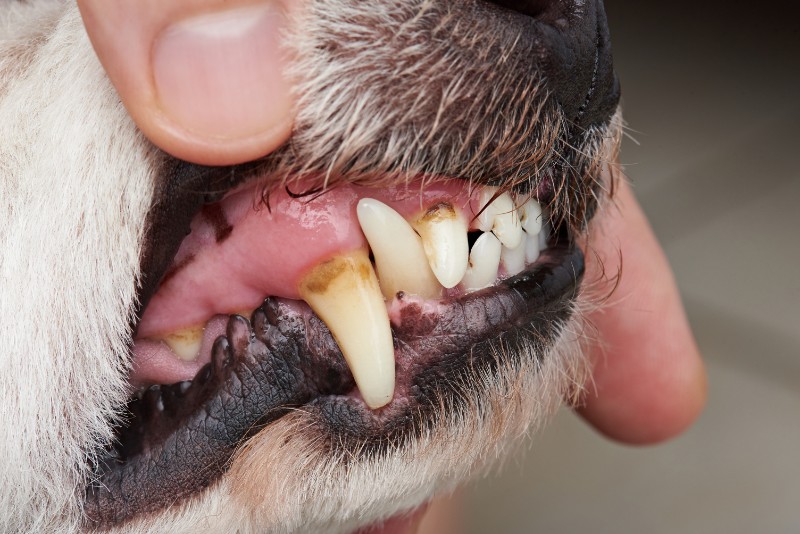Filling in the Blanks: Do Pets Get Cavities?

We brush our teeth twice a day, floss regularly, and visit the dentist every 6 months. Why do we do all this work? To prevent cavities, of course! We all want to avoid a date with the dentist’s drill, and most of us will do anything to keep those nasty little holes from developing in our teeth.
When it comes to pet dental care, however, (which is something we’re passionate about here at Lone Tree Veterinary Medical Center!), cavities aren’t always on the radar. Although rare, cavities in pets are certainly possible, and preventing them is important to keeping your pet’s teeth and gums healthy.
Cavities in Pets
Also called dental caries, cavities occur in approximately 5% of dogs. Cavities typically develop when a dog has a high salivary pH, providing the perfect environment for bacteria on the teeth to ferment leftover food particles in the mouth. The acid produced by the bacteria can wear down the enamel, causing painful caries to develop.
Cats don’t develop cavities as we know them, but they can develop holes in their teeth caused by tooth resorption, a progressive disease where the tooth structure breaks down, starting with the outer enamel surface. These holes, called feline odontoclastic resorption lesions (FORLs), are usually located at or below the gumline, causing extreme pain and difficulty eating. The exact cause of FORLs isn’t known, but factors such as diet, water supply, dental disease, genetics, and illness, can all play a role.
Keeping Cavities at Bay
Dedication to at-home dental care is crucial when it comes to preventing cavities in pets. Dogs and cats should have their teeth brushed at home on a daily basis. Before you roll your eyes at the idea, we want to assure you that most pets (yes, even cats!) can become accustomed to this daily care routine with patience and commitment. Our veterinarians and veterinary technicians are always happy to demonstrate proper brushing techniques, and can answer any questions you might have about starting and maintaining this important habit.
Because the majority of dental problems occur below the gumline, most pets also require professional dental exams and cleanings that are performed while the pet is under anesthesia. These preventive measures allow us to safely and thoroughly inspect the mouth, take digital x-rays of the mouth (teeth, roots, jawbone), and descale and polish each tooth. Any extractions or other dental work may also be performed during the same dentistry appointment, if needed.
Cavities in pets may not be as common as they are in people, but that they do happen serves as a good reminder of the importance of regular dental care for our furry loved ones. Please don’t hesitate to contact the staff at Lone Tree Veterinary Medical Center with any questions or concerns you have about your pet’s oral health.

